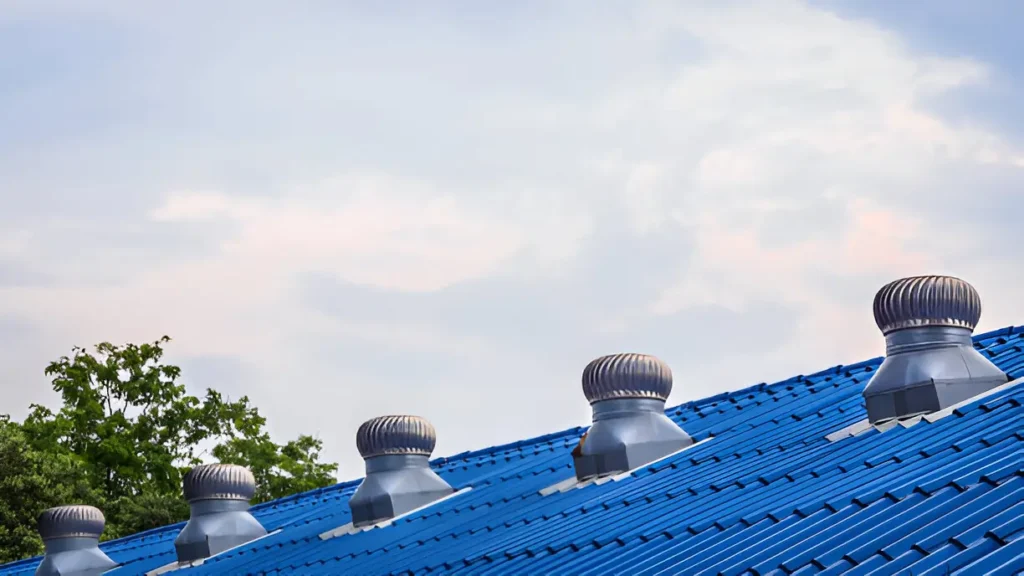Proper roof ventilation and sealing are critical components for maintaining a safe, energy-efficient, and long-lasting home. Yet, many homeowners often overlook these crucial elements, potentially leading to structural damage, insulation inefficiencies, and unnecessary repair costs. If you’re a homeowner or a DIY enthusiast, understanding these processes can save you from headaches and costly mistakes down the road.
This blog provides practical steps to ensure proper ventilation and airtight sealing for your roof. You’ll learn how ventilation works, why sealing is essential, and how products like foam closure strips can play a pivotal role in maintaining your roof’s integrity.
Why Proper Ventilation Matters
Roof ventilation is the key to creating a balanced airflow system that circulates air through the attic or roof space. Proper ventilation prevents excess moisture buildup and ensures that your home remains protected from various risks. Here’s why it’s essential:
1. Prevents Moisture Build-Up
Moisture accumulation can lead to mold, mildew, and even structural decay over time. Poor airflow prevents moisture from escaping, particularly during colder months when condensation tends to collect on the underside of your roof.
2. Temperature Regulation
Improperly ventilated roofs can trap hot air during summer and cold air in winter. This directly impacts your home’s energy efficiency, leading to higher cooling and heating bills.
3. Extends Roof Lifespan
Trapped moisture or heat can weaken roofing materials, such as shingles and metal panels. A well-ventilated roof helps these materials last longer by reducing undue stress.
4. Reduces Ice Dams
Ice dams occur when snow melts and refreezes at the edges of your roof due to uneven temperatures. With consistent airflow, you prevent such heating anomalies, keeping your roof safer in the long term.
The Importance of Proper Sealing
While ventilation ensures airflow, sealing keeps your roof watertight and secure. Unsealed gaps can allow weather elements, pests, and air drafts to enter, compromising the functionality and efficiency of your roofing system.
Identifying Common Sealing Challenges
Some of the most common sealing challenges include:
- Uneven surfaces causing gaps between roofing materials.
- Weathering over time, which can weaken seals.
- Improper installation leaving areas exposed to wind and water.
Using the right sealing materials, like foam closure strips, ensures that your roof maintains airtight integrity while accommodating natural elements like thermal expansion and contraction.
Steps for Proper Roof Ventilation and Sealing
1. Assess Your Roof Design
Different roof types require distinct ventilation strategies. If your roof is steep-sloped, ridge vents are ideal, while flat roofs often depend on mechanical ventilation systems.
Identify problem areas, such as under-insulated spaces or unsealed edges, to better understand your needs.
Proper ventilation and sealing are crucial for maintaining the integrity of your roof, but even with the best precautions, issues can arise. If you notice signs of water damage or suspect a leak, it’s essential to address the problem promptly to prevent further damage. For residents in Bensalem, PA, seeking professional assistance is a wise choice. Expert services for roof leak repair in Bensalem, PA can ensure that any leaks are effectively sealed, protecting your home from potential water damage and extending the lifespan of your roof. Regular maintenance and timely repairs are key to preserving the structural health of your home.
2. Install Ventilation Features
Ensure proper airflow by incorporating the following ventilation elements:
- Ridge Vents: Installed along the roof’s peak to release warm air.
- Soffit Vents: Allow cooler air to flow into the attic space from the eaves.
- Gable Vents (if applicable): Installed on the walls of the attic to facilitate cross-ventilation.
Balance is essential; intake and exhaust vents should work in harmony for efficient airflow.
3. Choose High-Quality Sealing Products
For metal roofs, products like foam closure strips for metal roofing are designed to fill gaps between panels and create a tight seal. These strips are custom-fitted to match the profile of your metal roofing, preventing water and debris infiltration while reducing noise from vibrations.
4. Eliminate Gaps and Leaks
Check for gaps around skylights, chimneys, and vent openings. Use flexible, weather-resistant sealants to patch these areas. For edges and panel joints, foam closure strips are an excellent option due to their durability and precision.
5. Inspect Regularly
Schedule periodic inspections to ensure both ventilation and sealing remain intact. Look for signs of wear, such as:
- Water leaks inside your attic or home.
- Peeling roof paint or rust.
- Rough airflow or high humidity levels in your attic.
6. Consult a Professional If Needed
While DIY is a great way to save costs, roofing work often involves intricate details best handled by professionals. If you’re unsure about installing venting systems or need help matching closure strips to your roof profile, consult a specialist.
Essentials for Metal Roofs and Foam Closure Strips
Metal roofing adds durability and a sleek aesthetic to modern homes, but it comes with specific needs for sealing and airflow management. Without proper closures, the corrugated design may create tiny gaps that allow debris, water, and even pests to sneak through.
Foam closure strips address this issue effectively. Engineered to fit the ridges of your metal panels perfectly, they provide an airtight seal while accommodating roof movement caused by temperature changes. They’re not only functional but also easy to install, making them a favorite for both professional roofers and DIY enthusiasts.
Ensuring a Long-Lasting Roof
Proper roof ventilation and sealing require a balance of preparation, high-quality materials, and regular maintenance. By investing in these efforts, you ensure that your roof—not to mention your home—is safeguarded for years to come.
Read more: Maximizing the Lifespan of Your Home with Proper Maintenance Techniques
